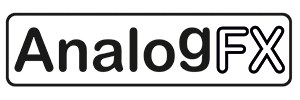Showing posts sorted by date for query Dots. Sort by relevance Show all posts
Showing posts sorted by date for query Dots. Sort by relevance Show all posts
Friday, December 05, 2025
LinnStrument 200 Bumpy Surface
video upload by Sound Workshop
"our Bumpy #LinnStrument Surface makes it easier to play by feel instead of by sight. We’ve shipped over 150 surfaces for LinnStrument 128, and preorders are now open for LinnStrumenf 200. Shipping in Feb 2026. Order before Dec 8 for a 15% discount.
Http://www.soundwork.shop/linnstrument"
"One BLACK aftermarket silicone surface for LinnStrument 128. LinnStrument not included.
This surface makes it easier to play LinnStrument by feel instead of by sight. Each row is shaped like a long speedbump, which has three benefits:
Guides fingers to stay on target during long pitch slides
Provides confident tactile feedback when shifting a finger up/down between rows or hitting a double stop
Allows more intentional Y expression by feeling for the front, back, or crest of the bump
The grooves are centered over the top of the notes, instead of on the boundaries. The way the finger can feel when it's on target.
The root note bumps or dots have been removed to make alternate tunings easier.
This surface is great for playing LinnStrument with eyes closed or playing with two hands.
International Customers: prices listed do not include import taxes or fees. Please note that you may need to pay an additional custom when importing.
Black Surface Back Side Cosmetic Issue (Oct 22, 2025): the remaining 8 black surfaces have unintended paint application on the back side. After installation this is not visible to the user, and it has no functional impact. Some examples are shown here. We apologize for the suboptimal appearance. The price has been reduced %10 for the remaining stock. Thank you."
Tuesday, October 28, 2025
Korg PS-3300: Favorites
video upload by App Sound (by Matt Sour)
"Playing some cool factory patches - a first contact with the Korg PS-3300.
0:00 Vibrato Lead
0:55 Dotted Dots
1:37 Cassini
2:16 Ring Popp Redux
2:46 Earth, Wind & Bird
3:12 Droner
3:53 Solo - Ens Rich Choir
4:29 Metallic Wind
4:58 Soft
5:33 Dinosaurus Walk
5:58 Beauty in Sustain
6:31 Dry Pad"
Sunday, October 19, 2025
Yamaha CS30 SN 4145
Note: links to listings are affiliate links for which the site may be compensated.
via this Vemia listing
Click the auction link on top when you get there for additional listings.
Pic of the inside.


 "Released in 1977, the Yamaha CS30 is the flagship of their CS Monophonic range. It is as close to a modular synthesiser that Yamaha ever made and its modulation and routing options are extensive.
"Released in 1977, the Yamaha CS30 is the flagship of their CS Monophonic range. It is as close to a modular synthesiser that Yamaha ever made and its modulation and routing options are extensive.
This one plays and sounds great. The synthesiser responds to all the pots and sliders as it should and it's ready to use and create weird and wonderful noises and textures. However, to get it to 100 percent functionality the synth requires a service to fix a few issues. Neither the combined 1+2 audio jack nor headphone output work, though the individual 1 and 2 jacks are fine. The sequencer works when switched to Manual and steps through by pushing the red button. However, the 'Clock' function only works when the synth has been powered on for a while and has 'warmed-up'.
Cosmetically the synth is in pretty good shape with nothing broken or missing. There are lots of very small dots of blistered paint, some with a hint of surface rust. The most noticeable ones are at the top of the control panel but these have not increased in size or number over the past decade-or-so. They don't look too bad, in my opinion. Inside is clean and dry with no signs of damp. One of the C keys has a cigarette burn (WHY??!!!) which has melted the plastic slightly. However, all keys are secure and function correctly. The case has a few marks here and there, but overall it looks good.
The case was designed to make servicing very easy. The front control panel is hinged at the back and can be opened by removing just two screws from each side panel. This then reveals a very neat collection of boards and wiring.
The CS30 can be easily integrated into a modern MIDI studio setup. By using an appropriate converter you can interface various features of the synthesiser via its numerous control inputs and outputs:
Foot Controller (CV) for volume in.
Sequencer CV and Trigger (gate) out.
Key Voltage (pitch CV) in and out.
Trigger (gate) in and out.
External (audio to the filter) in.
It features two voltage controlled oscillators (VCOs), two voltage controlled filters (VCFs - both featuring low-pass, band-pass and high-pass options), two voltage controlled amplifiers (VCAs) and three envelope generators. It also sports a ring modulator and a voltage controlled low-frequency oscillator (LFO).
It is fairly unusual for a hard-wired synthesizer in that it features a variety of switches which allow the user to re-route the signal flow from the usual VCO-VCF-VCA convention. For example, VCO 1 can output a square wave through VCF 1 whilst also outputting a high-pass filtered sawtooth wave through VCO 2. Another example is that the envelope generators can be assigned to any of the VCO, VCF and VCA modules and can also be inverted. Because the LFO is voltage controlled, the oscillating speed can be governed by an envelope generator and different waveforms can be applied to the other modules all at the same time. The CS30 also features an external signal input for filtering other musical instruments and audio sources, which can also be used as a modulation source. It includes an onboard eight-step analogue sequencer."
via this Vemia listing
Click the auction link on top when you get there for additional listings.
Pic of the inside.


 "Released in 1977, the Yamaha CS30 is the flagship of their CS Monophonic range. It is as close to a modular synthesiser that Yamaha ever made and its modulation and routing options are extensive.
"Released in 1977, the Yamaha CS30 is the flagship of their CS Monophonic range. It is as close to a modular synthesiser that Yamaha ever made and its modulation and routing options are extensive.This one plays and sounds great. The synthesiser responds to all the pots and sliders as it should and it's ready to use and create weird and wonderful noises and textures. However, to get it to 100 percent functionality the synth requires a service to fix a few issues. Neither the combined 1+2 audio jack nor headphone output work, though the individual 1 and 2 jacks are fine. The sequencer works when switched to Manual and steps through by pushing the red button. However, the 'Clock' function only works when the synth has been powered on for a while and has 'warmed-up'.
Cosmetically the synth is in pretty good shape with nothing broken or missing. There are lots of very small dots of blistered paint, some with a hint of surface rust. The most noticeable ones are at the top of the control panel but these have not increased in size or number over the past decade-or-so. They don't look too bad, in my opinion. Inside is clean and dry with no signs of damp. One of the C keys has a cigarette burn (WHY??!!!) which has melted the plastic slightly. However, all keys are secure and function correctly. The case has a few marks here and there, but overall it looks good.
The case was designed to make servicing very easy. The front control panel is hinged at the back and can be opened by removing just two screws from each side panel. This then reveals a very neat collection of boards and wiring.
The CS30 can be easily integrated into a modern MIDI studio setup. By using an appropriate converter you can interface various features of the synthesiser via its numerous control inputs and outputs:
Foot Controller (CV) for volume in.
Sequencer CV and Trigger (gate) out.
Key Voltage (pitch CV) in and out.
Trigger (gate) in and out.
External (audio to the filter) in.
It features two voltage controlled oscillators (VCOs), two voltage controlled filters (VCFs - both featuring low-pass, band-pass and high-pass options), two voltage controlled amplifiers (VCAs) and three envelope generators. It also sports a ring modulator and a voltage controlled low-frequency oscillator (LFO).
It is fairly unusual for a hard-wired synthesizer in that it features a variety of switches which allow the user to re-route the signal flow from the usual VCO-VCF-VCA convention. For example, VCO 1 can output a square wave through VCF 1 whilst also outputting a high-pass filtered sawtooth wave through VCO 2. Another example is that the envelope generators can be assigned to any of the VCO, VCF and VCA modules and can also be inverted. Because the LFO is voltage controlled, the oscillating speed can be governed by an envelope generator and different waveforms can be applied to the other modules all at the same time. The CS30 also features an external signal input for filtering other musical instruments and audio sources, which can also be used as a modulation source. It includes an onboard eight-step analogue sequencer."
Wednesday, September 10, 2025
DOTS 🐞 eurorack module quick demo video
video upload by Johannes
"This little demonstration is meant to give a general idea of the video. I am not very skilled at explaining things or editing videos. 🐞
DOTS is a compact, 6-channel Eurorack module designed for generating triggers and gates. This open hardware project allows you to build the module yourself, with instructions and resources provided. Please visit the website for more info.
https://www.d-o-t-s.net"
Sunday, August 17, 2025
Eurorack Jam Case… What Could Go Wrong?!
video upload by Dots
"Join me for another Mini Modular Moments episode as I unveil my brand new studio recording and jamming Eurorack case! In this video, I walk you through every module in my compact modular synth build — from the Frequency Central Product to the Squarp Rample drum sampler — and explain why I chose each one. Then, I power it up for the very first time on camera to see what kind of noise (or magic!) it can make.
Featuring voices, drums, filters, modulation, and a Keystep Pro for control, this case is designed for full jams in a portable format. Expect some happy accidents, a little chaos, and plenty of patching fun.
🎛 Modules Featured:
Frequency Central Product
Knobula Monuatic
Nano Modules ONA
Mutable Instruments Veils
Klavis Quadigy
WMD Carbon Filter
Squarp Instruments Rample
Endorphin.es Cockpit
…and more!
Whether you’re into Eurorack modular synths, studio jam setups, or just curious about how a live performance case can evolve into a studio powerhouse, this one’s for you"
Monotrail Starting with Modular
video upload by Monotrail Tech Talk
1. Getting started with modular - 4 eurorack systems explained
There are many ways to get started with modular, and many reason to be interested in it. There is no single solution, modular is a journey and you have to discover and experience your own. This video is part of a series where I share some thoughts and ideas I wish I could find when I started out. Take or leave whatever you like :)2. What modules should you buy when starting with modular?
Timetable:
00:00 – Introduction
02:17 – The Monosynth
06:32 – The Sonic exploration lab
10:26 – The Performance system
15:34 – The Dedicated tool
Getting started with eurorack can be confusing. The number of modules available grows ever week. And on top of that, what you need depends on what you want to do with your modular. In this episode in a longer series, I look at a 4-module starter voice as an option.
Timetable:
00:00 – Intro
00:20 – Building a mono synth
02:49 – Oscillators
05:08 – Filters
07:47 – VCAs
10:26 – Modulation
14:47 – Patches
Back to Dots:
Watch our whole Mini Modular Moments playlist here:
LABELS/MORE:
Endorphin.es,
eurorack,
Frequency Central,
Klavis,
Knobula,
Mutable Instruments,
NANO,
Squarp Instruments,
WMD
Wednesday, July 23, 2025
Custom Skinned Roland Jupiter XM
Note: links to listings are affiliate links for which the site may be compensated.
via this Reverb listing
"Cool custom Jupiter XM in excellent condition.
Comes with:
•power supply
•custom skin overlay, very small parts that were cut to fit as seen in pictures ($80 value)
•custom color vinyl dots on preset buttons
•JD800 model expansion installed ($149 value)"
via this Reverb listing
"Cool custom Jupiter XM in excellent condition.
Comes with:
•power supply
•custom skin overlay, very small parts that were cut to fit as seen in pictures ($80 value)
•custom color vinyl dots on preset buttons
•JD800 model expansion installed ($149 value)"
Saturday, July 05, 2025
doubleknot
video upload by kentaro
"It's one of my favorite synths because the balance of limitations and possibilities feels just right. I find myself wanting to play with it from time to time. This time, I was recording a lot of raw one-shots for use in dots."
Monday, June 02, 2025
Roland Jupiter 8 & TR-808 Canvas Artwork by Vintage Voltage
Note: links to listings are affiliate links for which the site may be compensated.
via these eBay listings
Check the seller's other listings for additional designs.
 "Jupiter 8 Stretched Matte Canvas Artwork by Vintage Voltage (Roland JP-8 Classic Synthesizer Japan)
"Jupiter 8 Stretched Matte Canvas Artwork by Vintage Voltage (Roland JP-8 Classic Synthesizer Japan)
The legendary Roland Jupiter 8 keyboard (aka JP-8) is one of the most iconic and sought after synthesisers of all time. It continues to be revered not only for its historical significance in music but also for its enduring sonic capabilities."
And:
"TR-808 Stretched Matte Canvas Artwork by Vintage Voltage (Roland 808 Rhythm Composer Drum Machine)
The Roland TR-808 analog drum machine, introduced in 1980, is a seminal electronic musical instrument. With only around 12,000 units produced in its two-year run, its profound influence on popular music culture is undeniable. The 808's distinctive sounds, including deep bass drums and crisp snares, have become foundational in genres like hip-hop and electronic music, cementing its status as an iconic tool for musicians."
"Each matte canvas comes with back hanging already included for convenient placement. The frame is made with profile radiata pine that is ethically sourced from renewable forests.
Small 16" x 12" (40cm x 30cm)
Medium 24" x 18" (60cm x 45cm)
Large 32" x 24" (81cm x 61cm)
Depth all sizes 1.25" (3.17cm)
Materials: cotton and polyester composite (canvas), pine wood (frame)
Back hanging included and soft rubber dots on bottom back corners for support
Inner frame made with radiata pine sourced from renewable forests
*Please note* : Due to the production process of the canvases, please allow for slight size deviations with a tolerance +/- 1/8" (3.2mm)
MusicMerch.Me is a new clothing and merch store dedicated to musicians, producers and synthesists. Exclusive home to Vintage Voltage, a brand focused on legendary electronic musical instruments such as synthesizers and drum machines."
via these eBay listings
Check the seller's other listings for additional designs.
 "Jupiter 8 Stretched Matte Canvas Artwork by Vintage Voltage (Roland JP-8 Classic Synthesizer Japan)
"Jupiter 8 Stretched Matte Canvas Artwork by Vintage Voltage (Roland JP-8 Classic Synthesizer Japan)The legendary Roland Jupiter 8 keyboard (aka JP-8) is one of the most iconic and sought after synthesisers of all time. It continues to be revered not only for its historical significance in music but also for its enduring sonic capabilities."
And:
"TR-808 Stretched Matte Canvas Artwork by Vintage Voltage (Roland 808 Rhythm Composer Drum Machine)
The Roland TR-808 analog drum machine, introduced in 1980, is a seminal electronic musical instrument. With only around 12,000 units produced in its two-year run, its profound influence on popular music culture is undeniable. The 808's distinctive sounds, including deep bass drums and crisp snares, have become foundational in genres like hip-hop and electronic music, cementing its status as an iconic tool for musicians."
"Each matte canvas comes with back hanging already included for convenient placement. The frame is made with profile radiata pine that is ethically sourced from renewable forests.
Small 16" x 12" (40cm x 30cm)
Medium 24" x 18" (60cm x 45cm)
Large 32" x 24" (81cm x 61cm)
Depth all sizes 1.25" (3.17cm)
Materials: cotton and polyester composite (canvas), pine wood (frame)
Back hanging included and soft rubber dots on bottom back corners for support
Inner frame made with radiata pine sourced from renewable forests
*Please note* : Due to the production process of the canvases, please allow for slight size deviations with a tolerance +/- 1/8" (3.2mm)
MusicMerch.Me is a new clothing and merch store dedicated to musicians, producers and synthesists. Exclusive home to Vintage Voltage, a brand focused on legendary electronic musical instruments such as synthesizers and drum machines."
Thursday, May 22, 2025
Silent demo: sqsl Tactile by Michal Macura (iPad Midi Controller) modulating Fundamental2 Synth
video upload by Gavinski’s Tutorials
"sqsl Tactile is a gorgeous-looking and satisfying-to-use multitouch midi controller for iPad that was designed to control VCV Rack but can also be used to control anything that accepts CC messages on Channels 1 and 2. Sqsl is the dev of other apps I’ve reviewed on this channel like sqsl Latch and sqsl Lottery. Note: normally I would post a short, silent video like this as a YouTube Short, but in this case I didn’t, as this app only uses landscape mode, not portrait mode, but Shorts must be in portrait mode. Fundamental 2, the synth I’m using it to control, also does not resize properly in portrait mode.
Here I’m using Tactile to control the gain levels of the oscillators in Fundamental2 synth loaded inside AUM on my iPad. If you look at the video, you can see these 8 sliders on the right side of the Fundamental2 UI moving—they’re being controlled by Tactile. I am sending midi from Tactile out on Channel 1, which means (see below for more info) that the distances between my fingers and the dots on the Tactile UI is the thing that is setting the depth of modulation. Although here I’m modulating gain, you could of course route Tactile to control all kinds of things like filter cutoff, and so on. Note that sqsl Tactile is not an AUv3 app, it’s standalone only, but that midi can, of course, be routed to other apps and hosts, like I am doing here. Be sure to read the Appstore description below to see the limitations of the app, users should also have a basic understanding of Midi CC to know how to set things up, but it is very simple to operate if you do."
Stylophone CPM DS-2: Dark Atmospheric Sounds. No Talk Demo
video upload by Anton Anru
"Obsidian is a collection of 50 custom presets for the analog synthesizer Stylophone CPM DS-2. In this pack, you’ll find drones, textures, FXs, rhythmical patterns and sequences, and immersive soundscapes.
🔮 I was fascinated by exploring this drone machine, and in this collection, I share the results of that journey. My goal was to extract a broad variety of timbres— dark, noisy, vintage/retro, cold, dull, distorted, metallic, tense, as well as atonal, non-harmonic, FX-like, evolving, moving, and sweeping sounds.
📦 Get the soundset: https://antonanru.sellfy.store/p/cpm-...
📺 The soundset draws inspiration from sci-fi movies, soundtracks, dystopian narratives, urban landscapes, noise ambient albums, experimental modern art, and innovative sound design.
📻 Perfect for genres such as Dark, Noise, Ambient, Cinematic, IDM, Electronica, Dub, Deep, Techno, Industrial, Minimal, Garage, Experimental, and more. These timbres also work exceptionally well for movie soundtracks, games, apps, digital art, live sound art performances, and VR landscapes—anywhere a dark, atmospheric vibe is needed.
📓 The soundset is presented in a PDF document. Each page contains notes explaining how each patch works, which parameters to tweak during playback, and techniques to further develop the timbre during performance. By following these instructions and experimenting with the suggested settings, you’ll deepen your understanding of the synth and unlock its true potential.
🎧 Each patch also includes an audio example to help you grasp the intended sound.
💾 The collection additionally includes 24/41000 WAV samples. You can use these samples as they are, or feel free to resample, edit, and apply effects in your DAW, sampler, or granular synth. They provide versatile material for your sonic experimentation.
🖲 The Stylophone CPM DS-2 is an analog synthesizer highly sensitive to both settings and performance. I’ve done my best to document all parameters precisely; however, expect slight variations, as this is a truly alive, analog instrument. This is especially true for pitch, tuning, and FM settings—and in some cases, on the delay. The PITCH/RATE and LFO DEPTH knobs are extremely responsive— even a slight movement can shift the pitch significantly.
Many presets don’t adhere to a strict tonal center, so feel free to experiment with frequency settings. If you need to hit specific notes, I recommend using a tuner when adjusting pitch and FM."
Thursday, February 27, 2025
Synth East 2025 Highlights
video upload by Molten Music Technology
"My full report on the fabulous synth focused shenangans that went on over the Synth East 2025 weekend.
Presented by:
https://norwichartscentre.co.uk/
https://www.electronicsound.co.uk/
https://moltenmusictechnology.com/
https://syntheast.com/"
Synth East 2025 Norwich Synth Club Performances
video upload by Molten Music Technology
"Two performances from members of the Norwich Synth Club. The first group are called A Vector in Hilbert Space and the second group are called D A C 3."
Synth East 2025 All-Star Patch-Off
video upload by Molten Music Technology
"Draw two modular artists out of a hat and persuade them to improvise live on stage - that is the Patch-Off and these are your stars:
Paulee Bow - / @magicalsynthadventure3216
Finlay Shakespeare - https://finlayshakespeare.bandcamp.com/
Nicki from Dots - https://www.iamseeingdots.co.uk/
Gaz Williams - / gazwilliams
Steve Davis - https://theutopiastrong.bandcamp.com/
Robin Vincent - https://moltenmusictechnology.com/
Visuals by Sloon - / sloon_visuals"
Sunday, December 15, 2024
Meet DOTS - An open hardware, open source DIY eurorack module
video upload by Johannes
"DIY eurorack module web teaser
www.d-o-t-s.net
https://github.com/johannesstrueber/dots"
From the manual:
The module features six outputs and two inputs. Each output is numbered from 1 to 6 and is accompanied by an LED dot that indicates the current state of the output. The inputs consist of a Clock input, which receives clock signals and triggers specific actions, and a CV input, which functions as a trigger for various control voltage signals. When a clock signal is detected, the corresponding LED will light up red. When an output is active the corresponding dot will light up white. You need to save all settings in the CONFIG menu.
The primary navigation tool is the rotary encoder, which allows you to toggle between different states and menus by pressing it. The module includes a potentiometer labeled Range, which is used to adjust a delay parameter.
Sequencer
In the sequencer program menu. You see a matrix of six channels (rows) by 16 steps (columns). Each channel can be toggled on or off by pressing the encoder. The current step is indicated by a white dot. The sequencer can be started and stopped by pressing the encoder. You can access the sequencer settings by scrolling the first element left or the last element right.
Random Trigger/Gates
The Random trigger program allows you to set a probability for each channel to trigger. The probability is set by the range potentiometer. The probability is displayed as a bar graph. The program can be set to trigger all channels at once or in a sequence.
Clock Divider
The clock divider program allows you to divide the incoming clock signal by a factor. Each circle represents one channel. If filled it will trigger the output. The divider can be set to a specific number or a mode like power of 2, prime numbers, or fibonacci numbers.
Saturday, July 20, 2024
Moffenzeef Modular Introduces DITDIT
video upload by Møffenzeef Mødular
NSFW WARNING: READ BEFORE YOU PLAY THE VIDEO: if you offended by penises, skip :20 through :26. If you are not, I won't spoil it for you. Almost didn't post the video for obvious reasons, but it is a bit of synth history... FYI, it's not a real penis. That would not get a post.
Check with the dealers on the right for availability.
"DitDit is a user configurable morse code gate sequencer. Plug a PS/2 compatible USB keyboard in, type whatever you want, clock it, and get morse code gates out. In addition to outputting the full morse code pattern, there are seperate outputs for dots and dashes labeled "dit" and "dah." There are 8 memory slots to save text buffers to with the ability to recall the buffers on the fly. Additional user configurable settings that adjust the playback behavior of DitDit can be controlled with the F keys on your keyboard and saved. All saved settings and text buffers remain after power cycle. DitDit was designed to explore complex polyrhythms using morse code.
Sure hope you like it otherwise it's . . . _ _ _ . . . for Moffenzeef :D."
Thursday, June 06, 2024
Moog Sub37/Subsequent 37: Melodic Patches & Patterns Demo
video upload by Anton Anru
"Dreamy Patterns is a collection of 64 Presets + Sequences for Moog Subsequent 37 and Sub 37.
The timbres cover a wide range of tones: mild and aggressive, deep and bright, soft and punchy.
Each preset contains a sequence with Pitch, Velocity, and Modulation lanes. Some patterns are made in Major scale, others - in Minor.
The collection also includes the sequences with odd lengths: 23, 18, etc... They create polymetric/polyrhythmic feel.
🔮 Get the soundset: https://bit.ly/3VsplFJ
The presets are suitable for different genres like Retrowave, Synthwave, Lounge, Downtempo, Chill Out, House, Progressive, Deep, Trance, Cinematic, Breaks, etc.
The pack also includes a folder with all sequences saved separately from the presets. You may use the sequences with any other timbres: choose/make a preset, go to the 'Sequencer' tab, and push 'Load'.
ModWheel is set in all patches, it adds brightness, changes the tone, or increases the length of notes.
Patches' volume levels are set close to each other, you won't get sudden volume spikes or drops while switching the timbres.
You may use the sequences as they are, or take them as a starting point for further editing and tweaking. Try different Rates/Time Divisions, including Triplet and Dots; try changing the length of a sequence from start or/and from end; try shifting the start point; try adding Octaves, try playing with Forward/Backward and Invert modes, or simply change steps' values: Pitch, Modulation, Modulation destination. Subsequent 37 gives nice performance tools, and you can get plenty of variations just with one sequence.
I recommend syncing the synth to some external beat to get a proper impression of the sequences.
Tuesday, November 21, 2023
KORG Introduces the MPS-10 Drum, Percussion & Sampler Pad
video upload by Korg
"The Korg MPS-10 is a cutting-edge drum pad, sampler, and looper designed for expressive percussion performances. Its 10 responsive drum pads, versatile sampler with 3,000+ samples, 32GB internal storage, and powerful 4-track looper offer endless creative possibilities. With real-time effects, modulation capabilities, and seamless kit transitions, it empowers musicians to shape their sound on the fly. Plus, its flexible connectivity options make integration into any setup a breeze."
MPS-10 Overview and Demo
video upload by Korg
"The Korg MPS-10 is an innovative drum pad, sampler, and looper that empowers musicians to craft expressive percussion performances. Its durable yet refined design caters to the diverse needs of drummers and percussionists, enabling creative and versatile performances.
Drummer Greg Fox highlights the Korg MPS-10's key features showcasing the 10 responsive drum pads, the versatile sampler with 3,000+ samples and 32GB internal storage, its robust 4-track looper, and real-time effects with modulation capabilities.
Musicians can shape their sound in real time using the four Continuous Control pads (CC pads) and experience seamless kit transitions through Smooth Sound Transition (SST). Additionally, its flexible connectivity options, including USB, MIDI, external trigger in, foot switch, and expression jack, simplify integration into any existing setup.
More details: https://www.korg.com/us/products/drums/mps10/
Check out Greg Fox here: https://gregfox.space/
Chapters:
00:00 Intro
00:16 10 Drum Pads
01:16 Four-Track Looper
03:11 Versatile Sound Presets
04:12 Sampler & Connectivity
05:09 Looping & Triggering"



Specifications
Maximum polyphony 48 voices Kits 200 (including user KITs) INST 2350 SAMPLE 3002 Effects 77 Input/output jacks and ports Headphones (6.3 mm TRS phone jack)
Audio outputs: MAIN OUT L (MONO), MAIN OUT R, SUB OUT 1, SUB OUT 2 (6.3 mm TRS phone jacks)
Audio inputs: LINE IN L/R, MIC IN (6.3 mm TRS phone jacks)
Trigger input: CH A/B, C/D (6.3 mm stereo phone jacks)
Foot pedals 1, 2 (6.3 mm TRS phone jacks)
Expression pedal (6.3 mm TRS phone jack)
MIDI OUT
USB-A (Type-A) USB standard ver. 2.0, Hi-Speed compliant (480 Mbps)
USB-B (Type-B) USB standard ver. 2.0, Hi-Speed compliant (480 Mbps) Internal memory 32 GB (including preset data) Playable data formats WAV, 44.1 kHz/48 kHz, 16-bit (up to 60 minutes long)
AIFF, 44.1 kHz/48 kHz, 16-bit (up to 60 minutes long) Display 320 × 240 dots (backlit color LCD) Operating temperature 0 to +40°C (avoid condensation) Power supply AC adapter (DC 9 V) Dimensions (W × D × H) 424 × 264 × 75 mm/16.69" × 10.39" × 2.95" Weight 2.3 kg/5.07 lb Included items AC adapter, Quick Start Guide
Monday, September 04, 2023
Norman McLaren's hand-drawn sounds
video upload by Robotussin Vintage Synths
"Scottish-Canadian animator Norman McLaren developed a technique of painting onto the optical soundtrack area of the film negatives of his animations.
The shapes would then make drones and buzzes when played through a special type of projector. He used the technique to create experimental soundtracks to his animations.
It's similar to Daphne Oram's technique of turning shapes into sound – though hers, which she called Oramics, was more complex, with dedicated machines that read shapes on the entire area of the 35mm film, rather than just the little strip that contains the soundtrack.
You can see the results in the third video above, an extract from McLaren's film 'Dots', which employs the technique.
McLaren – born in Scotland in 1914 – worked for the British Post Office's film unit until around 1939, when he moved to New York, then to Canada in 1941, where he produced animations for the National Film Board, before setting up an animation studio at the École des beaux-arts de Montréal and the Ontario College of Art.
There he produced around 70 films, much of it highly experimental and strange. He died in 1987 aged 72."
This also reminds me of the Optigan.
Norman McLaren is mentioned in this book: Vector Synthesis: a Media Archaeological Investigation into Sound-Modulated Light
LABELS/MORE:
documentaries,
exclusive,
exclusive2023,
Norman McLaren,
Optigan,
Oramics,
oscilloscopes
Friday, May 19, 2023
Akai MPC Keys 61 #AKAI #MPC #mpckey61
video upload by Kraft Music
"Find exclusive Akai MPC Key 61 BUNDLES at Kraft Music:
https://www.kraftmusic.com/brands/aka...
Akai gives an example of producing a beat from scratch and layering it up live at the Kraft Music studio.
The Akai Professional MPC Key 61 is a standalone production synthesizer keyboard ready to write the next chapter in the MPC legacy. Building on a history of powerful sequencing and the full MPC sampling experience, MPC Key 61 adds advanced next-generation virtual instruments and effects to MPC, expanding upon its arsenal of industry-leading music production tools. An incredibly expressive and playable 61-key semi-weighted keybed with aftertouch delivers dynamic and responsive control for MPC Key 61's world-class sounds, connecting the dots between sound and feel, while 16 velocity-sensitive RGB pads provide a complete standalone creative workflow.
Get more for your money with an exclusive Akai Professional MPC Key 61 bundle from Kraft Music. These package deals include the accessories you'll need to get the most out of your new music production & synthesizer keyboard, all for one low price. If you have any questions, please contact us. Our knowledgeable sales advisors will be happy to assist in choosing the bundle that's right for you!"
Tuesday, February 21, 2023
Mystics Vol 1 - DSI Prophet 08/REV 2 - Patches 17 to 32 (Dry + FX Presets)
video upload by GEOSynths
"Mystics Vol 1 contain 64 New Patches for the venerable DSI Prophet 08. I used to have one years ago and sold it, but had the opportunity recently to pick one up on Ebay, not to make Patches, just...'cause! Even though I have a Prophet Rev 2 and have made 2 Banks for it, there was something about the Prophet 08 that got me hooked on making new Sounds for it....Here they are....Mystics Vol 1.
Of course, there are no FX onboard, however I have previously use 2 Free Plug-Ins (below) and have made 64 FX Presets for each to match up with each Patch. I have also demonstrated the Patches both Dry and with the FX.
1 - Blue Cat Audio Chorus - https://www.bluecataudio.com/Products...
2. Valhalla Supermassive - https://valhalladsp.com/shop/reverb/v...
All you need to do is set up an Insert in your DAW, add the chorus in Slot 1 and in Slot 2, Supermassive. Then just match up the Preset Numbers/Names...That's it, levels are all done!
Here are the next 16 Patches with 2 more Videos to come.
00:00 - 17. Arp Over GEO
02:02 - 18. Moog Along Next GEO
03:11 - 19. Memories GEO
04:56 - 20. No Rhodes GEO
05:51 - 21. Polyanna GEO
06:55 - 22. Perc Organ GEO
08:10 - 23. Punchy GEO
09:12 - 24. Interference GEO
11:01 - 25. Sync or Swim GEO
12:09 - 26. Titans Shore GEO
14:17 - 27. Night Drive GEO
15:54 - 28. Metallix GEO
17:20 - 29. Anguish GEO
19:04 - 30. Dark Path GEO
21:29 - 31. Dots GEO
22:44 - 32. Foresight GEO"
Sunday, February 19, 2023
'Classic Flute' - How to create a more realistic all-analog patch than Classic vintage preset synths
video upload by AJH Synth Official
"A more realistic flute patch than you'll find on classic vintage synths, showing how it's possible to attain a more convincing recreation of an acoustic sound with modular synths, and without the need for samples or digital modules. A truly realistic flute is too much of a tall order - a greater amount of modules, and a more complex controller, would no doubt get you nearer, but here is a more modest way of achieving a reasonable, and nice-sounding impersonation.
Some of the early self-contained synths of the 1970's tried to make useable impersonations of 'real', acoustic or familiar instruments using easily-selectable presets with a very simple voice architecture. Some sounded better than others, but whilst they were often sonically appealing in their own right, they were seldom anywhere near realistic. Among the more famous were the ARP Pro Soloist, Roland SH1000/SH2000, and the Korg 700/700S - all of which very characterful and unique instruments, with their own strengths, and much loved to this day. This patch is a nod to those classic synths, but also exploring what is possible now with modest amount of purely analogue Eurorack modules.
Patch sheet with notes below.
The AJH SYNTH Eurorack range consists of high-end modules, all hand-made in the UK, most of which are based on classic, vintage designs, authentically recreating the circuitry of much sought-after analogue instruments and technologies of the past, whilst greatly expanding them, and bringing them to modern Eurorack levels of convenience, limitless flexibility, and reliability.
Check out the AJH Synth playlists for module 'User Guides', and 'Patch of The Week' videos, which will be either performances or 'how to' guides, detailing functions/methods, and a range of sounds, some familiar, some less so, containing a patch sheet at the end to show you how to construct it for yourself.
Video by @DreamsOfWires
Patch Sheet: https://kvisit.com/8AE/kYAH
NOTES
_______
Green dots show approximate pot and switch positions. Pots and switches that do not have green dots are not used in this patch, and should be left at their zero or off positions. Multiple cables may branch from one output to different destinations, so here a multiple should be used.
This patch needs a lot of fine-tuning, so precise pot positions cannot possibly be illustrated, but this should serve as a starting point, from where further experimentation should be applied. The video tries to explain what is happening with the core modules, which should make it easier to understand what needs fine-tuning.
KEYBOARD: Here the controller's MOD output is used to send Aftertouch, but alternatively Velocity, or direct control from the MOD wheel/strip could be sent to the Dual LFO's CV input instead, depending on your controller and personal preference. In the video I also used the Glide module as 'slew' to soften the harsh changes in aftertouch CV from this particular controller, which may not be needed on others.
TAP TEMPO LFO: Because the base tempo is selectable by tap, the rate of the LFO will have to be set by ear.
VCO: If you don't wish to use the envelope to affect PWM, then PWM SHAPE will need to be set just below -1 - the envelope makes a subtle difference here, changing the shape of the VCO's sound slightly.
NEXT PHASE: This is optional, as the noise is heard subtly in this patch, and only becomes more apparent when the AUDIO MIX of the Gemini is in favour of VCF1 (noise) rather than VCF2 (VCO), but to my ears it makes the sound of the noise more similar (see video description).
GEMINI 2412: I'm using the 'high resonance' setting on VCF1. which is set by the rear jumper, or optionally using the Gain Switch (see User Guide video or manual on the website. Without it the resonance will need to be set to maximum, but still might not be quite enough.
Modules used from top-left to bottom-right: Glide + Noise, Vintage Transistor Core VCO, Contour Generators, V-Scale, Tap Tempo VC-LFO, Next Phase, Gemini 2412, Discrete Cascaded VCA.
#eurorack #synth #modular"
Sunday, February 12, 2023
'Pan Flute' - How to make this movie-inspired, all-analog Synth Patch in Eurorack Modular
video upload by AJH Synth Official
"This was loosely inspired by the 'pan flute' sound from the film 'Aguirre: Wrath of God', and uses a single VCO, white noise, and envelope-controlled filtering to simulate the pipe and breath elements that form the sound. Fixed Filter Bank sculpts the noise, removing low frequencies and pushing selected highs, before being mixed into the Sonic XV's bandpass filter along with the square wave from the VCO. Importantly, the FFB's wet/dry mix is also controlled by an envelope here, a rare feature on a filter bank. Pulse width modulation from red noise ads a subtle distortion to the oscillator, and the VCA in the Dual LFO is used to ad optional pitch vibrato and VCF frequency modulation.
Patch sheet PDF: https://kvisit.com/8AE/_v8G
Aside from the flute scene (see link in video), the movie soundtrack was mostly the brilliant work of Popul Vuh, and makes the official album release worth listening to regardless of the movie, with memorable use of Mellotron. However, the Werner Herzog movie itself is equally brilliant and memorable, a captivating, immersive experience to watch, made on an unimaginably small budget, yet a direct influence on Coppola's 'Apocalypse Now' a few years later.
The AJH SYNTH Eurorack range consists of high-end modules, all hand-made in the UK, most of which are based on classic, vintage designs, authentically recreating the circuitry of much sought-after analogue instruments and technologies of the past, whilst greatly expanding them, and bringing them to modern Eurorack levels of convenience, limitless flexibility, and reliability.
Check out the AJH Synth playlists for module 'User Guides', and 'Patch of The Week' videos, which will be either performances or 'how to' guides, detailing functions/methods, and a range of sounds, some familiar, some less so, containing a patch sheet at the end to show you how to construct it for yourself.
Video by @DreamsOfWires
PATCH NOTES:
------------------------
Green dots show approximate pot and switch positions. Pots and switches that do not have green dots are not used in this patch, and should be left at their zero or off positions. Multiple cables may branch to different destinations, this is where some form of multiple should be used.
This patch needs a lot of fine-tuning, so precise pot positions cannot possibly be illustrated, but this should serve as a starting point, from where further experimentation should be applied. The video tries to explain what is happening with the core modules, which should make it easier to understand what needs fine-tuning.
KEYBOARD: Here the controller's MOD output is used to send Aftertouch, but alternatively Velocity, or direct control from the MOD wheel/strip could be sent to the Dual LFO's CV input instead, depending on your controller and personal preference. DUAL LFO: Output goes directly to EXP-CV of the VCO, and IN 1 of the CV MIX.
CV MIX: This module is used here to combine the CV from the LFO and Contour Generator 1, then to fine-tune it, before sending to Sonic XV and Fixed Filter Bank.
FIXED FILTER BANK 914: The IN 2 pot needs to be at zero - this sets the Dry level to zero if nothing is connected to the IN 2 socket, so that when the envelope changes the Wet/Dry level it is in fact affecting the output level of the module, as only a varying portion of the Wet signal is then sent to the Muting Mixer.
Modules used from top-left to bottom-right: Glide + Noise, Vintage Transistor Core VCO, Sonic XV, Contour Generators, Discrete Cascaded VCA, Dual LFO + VCA, CV Mix, Muting Mixer, Fixed Filter Bank 914."
NEXT PAGE
HOME
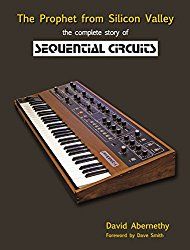
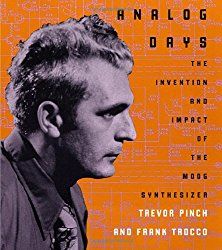
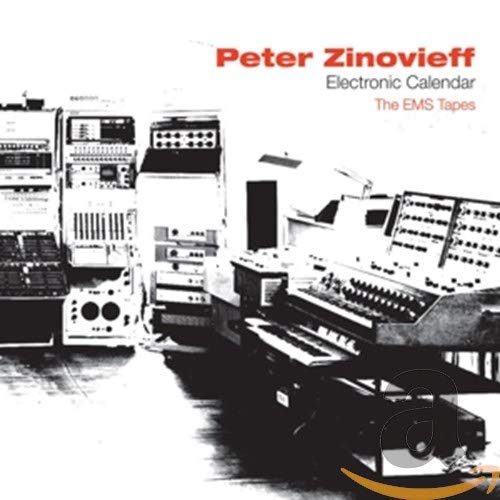
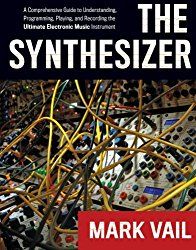
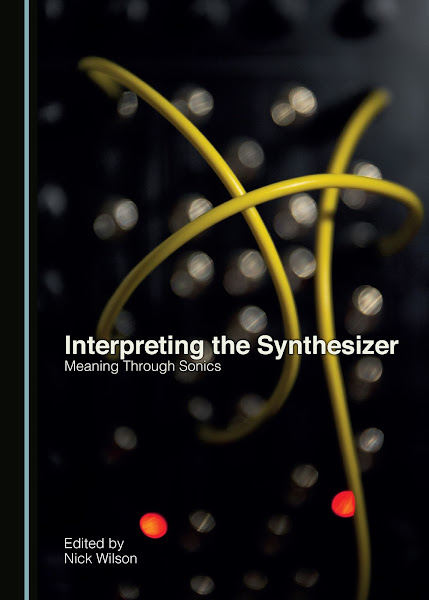
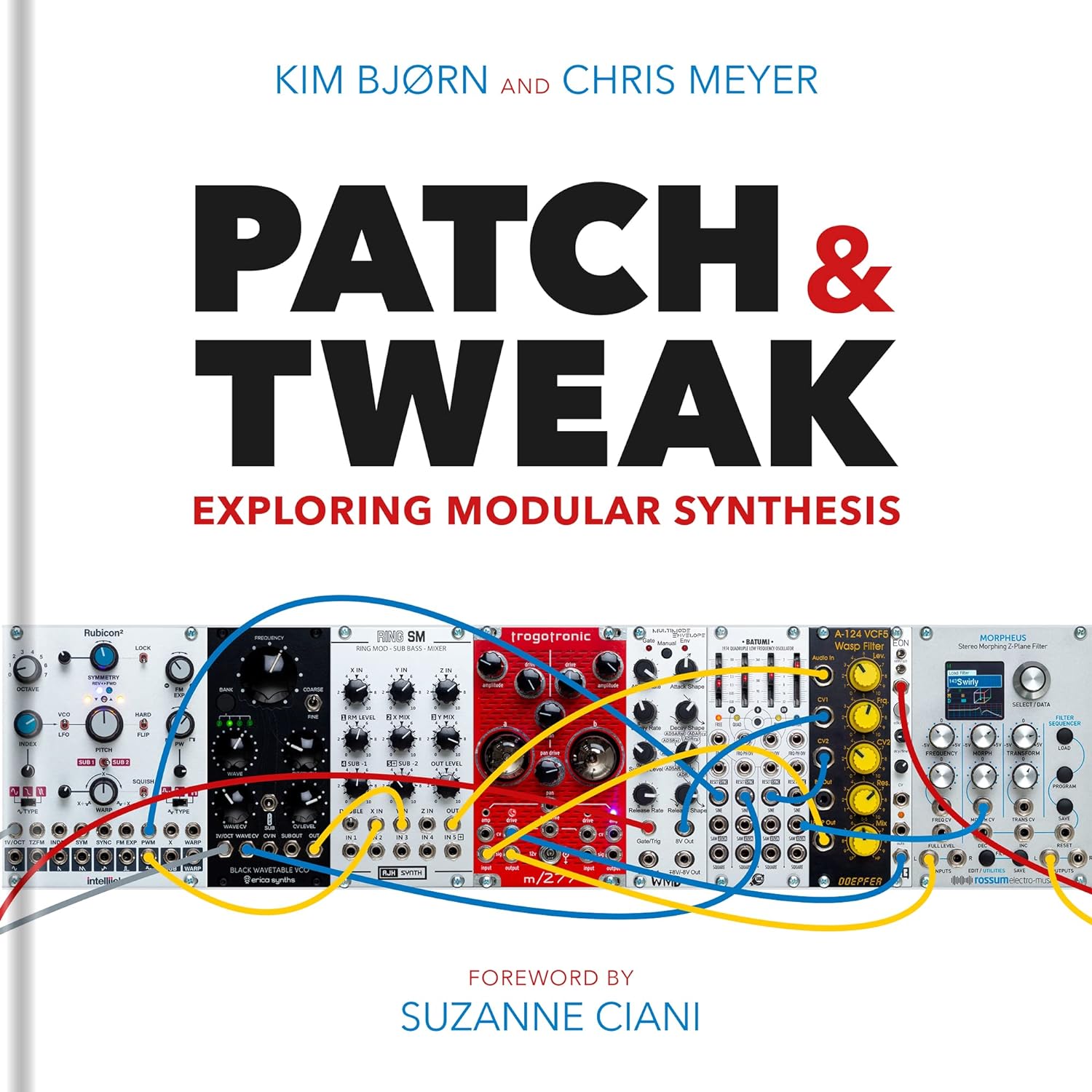

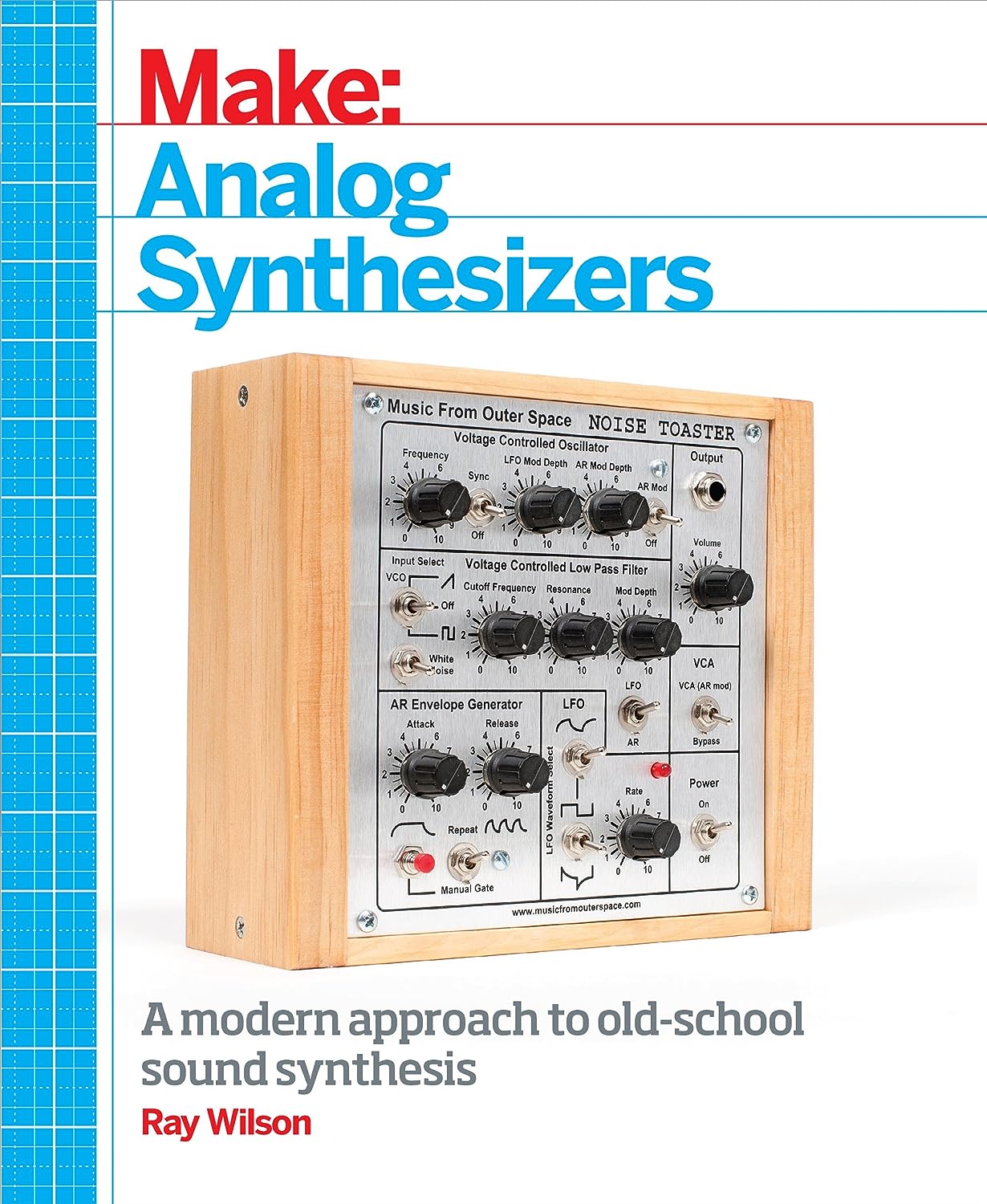
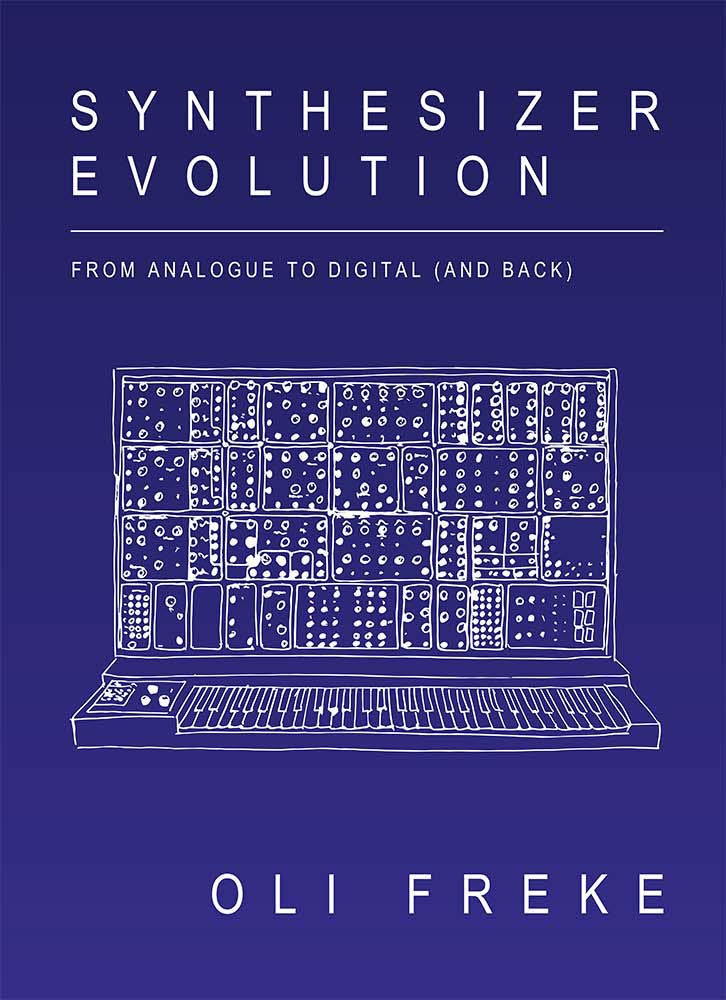
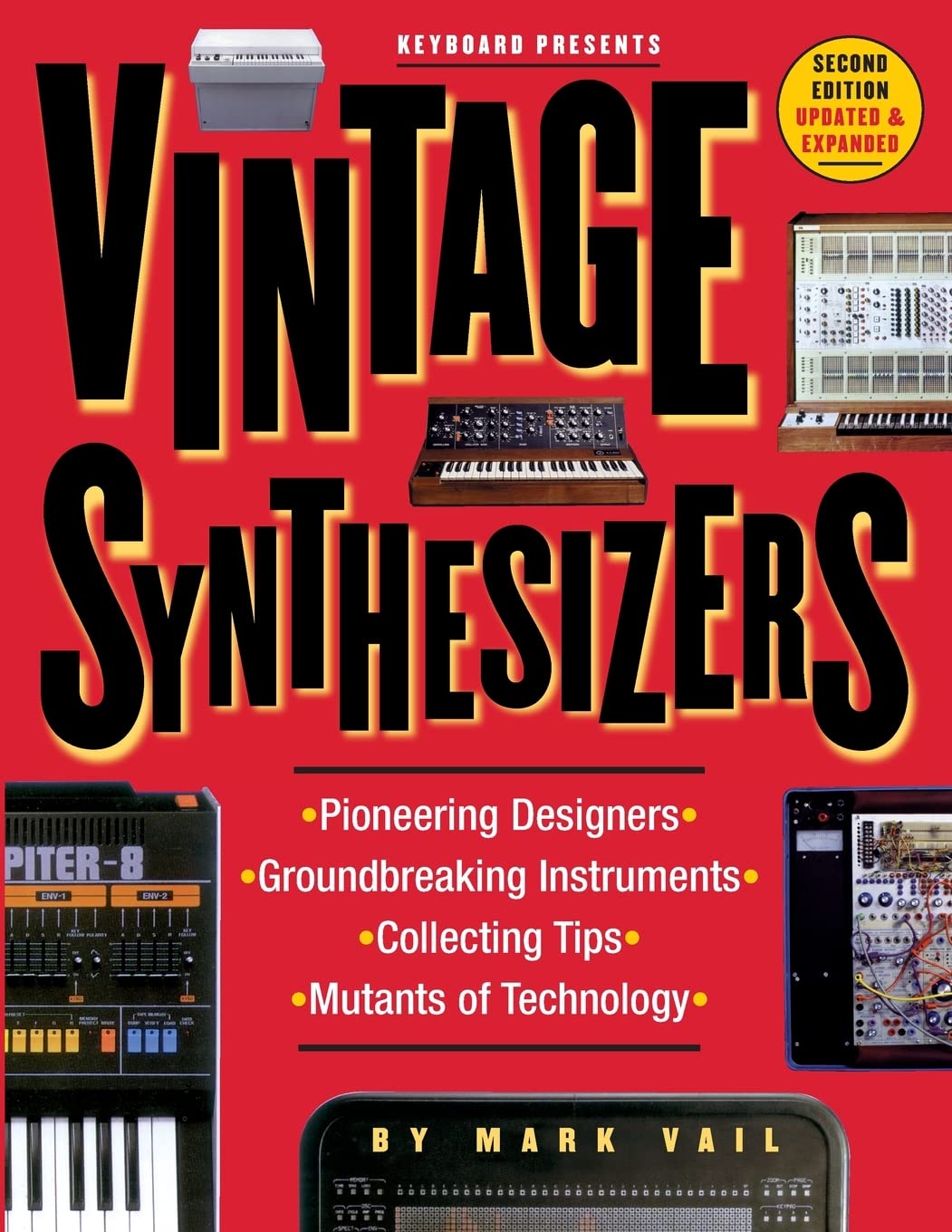
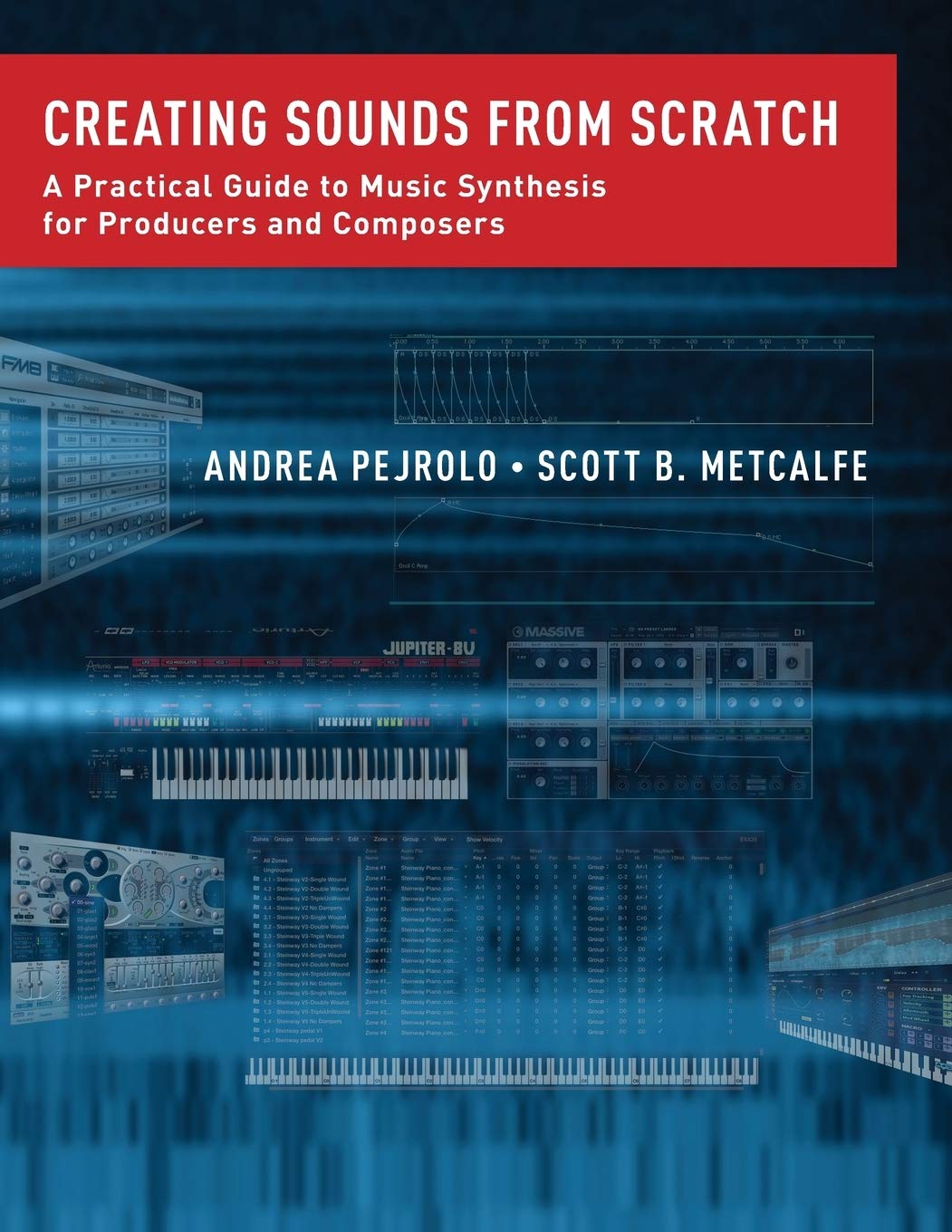
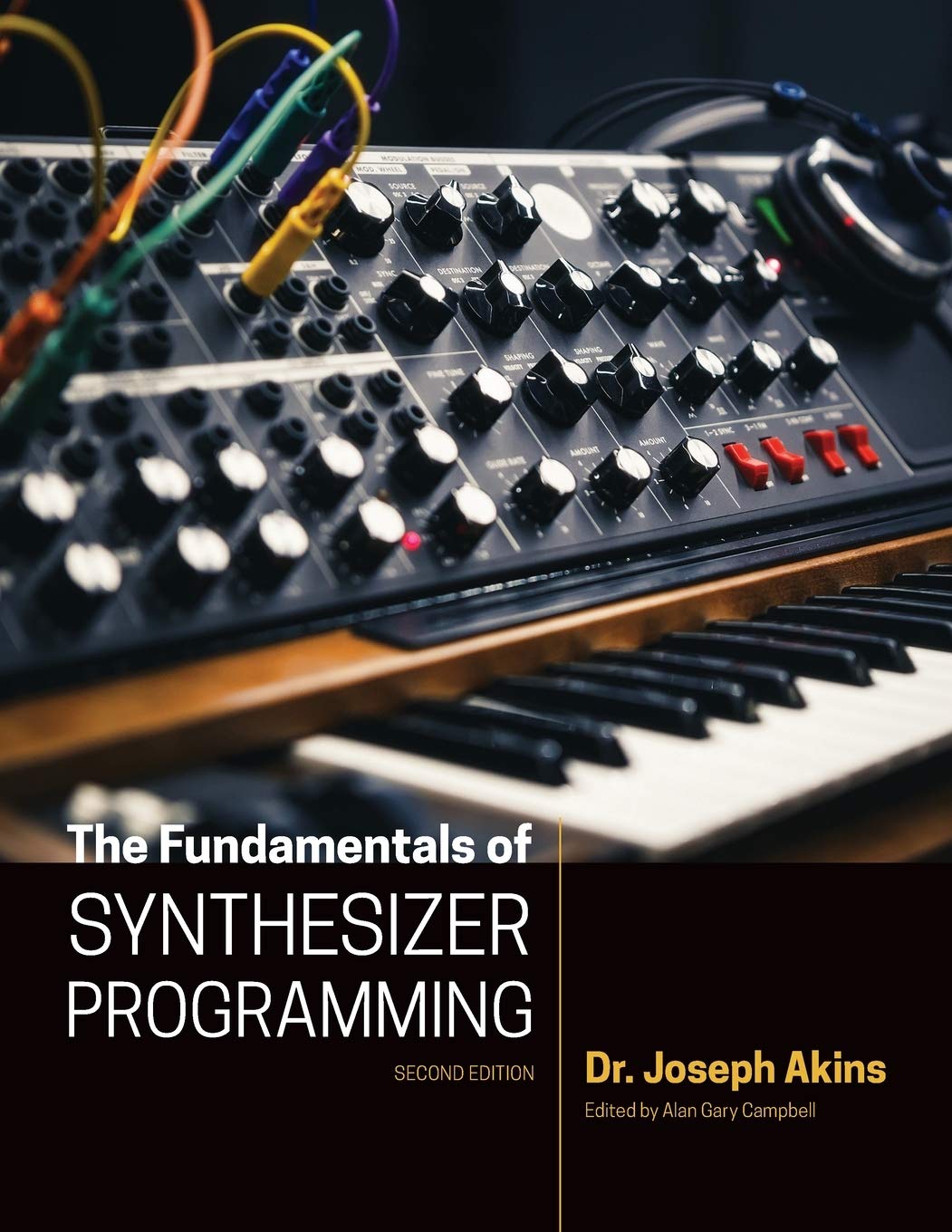

© Matrixsynth - All posts are presented here for informative, historical and educative purposes as applicable within fair use.
MATRIXSYNTH is supported by affiliate links that use cookies to track clickthroughs and sales. See the privacy policy for details.
MATRIXSYNTH - EVERYTHING SYNTH













© Matrixsynth - All posts are presented here for informative, historical and educative purposes as applicable within fair use.
MATRIXSYNTH is supported by affiliate links that use cookies to track clickthroughs and sales. See the privacy policy for details.
MATRIXSYNTH - EVERYTHING SYNTH





















